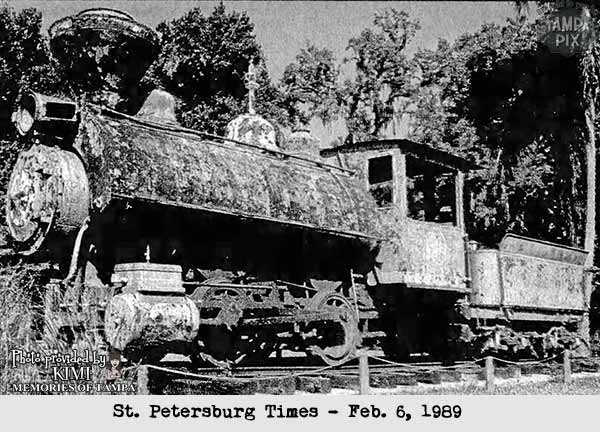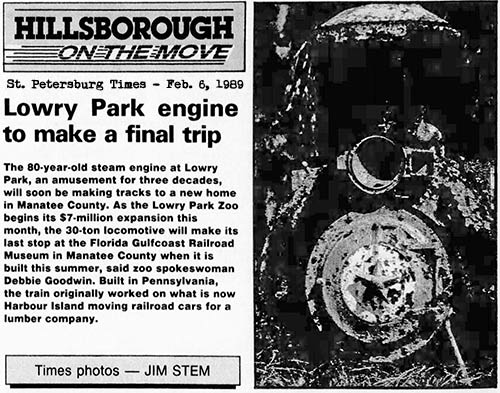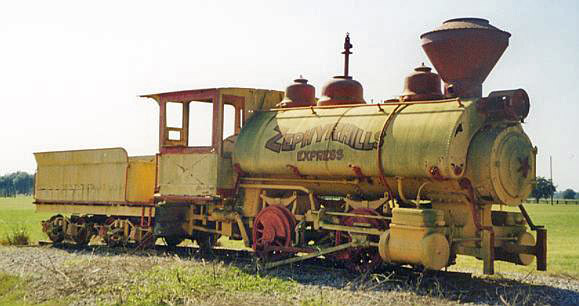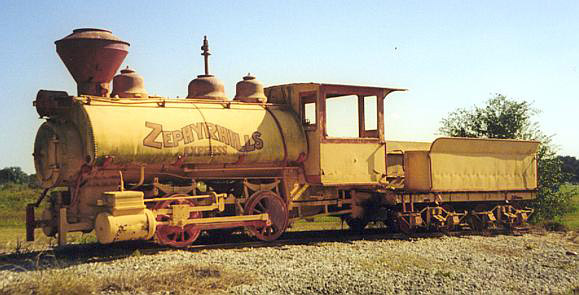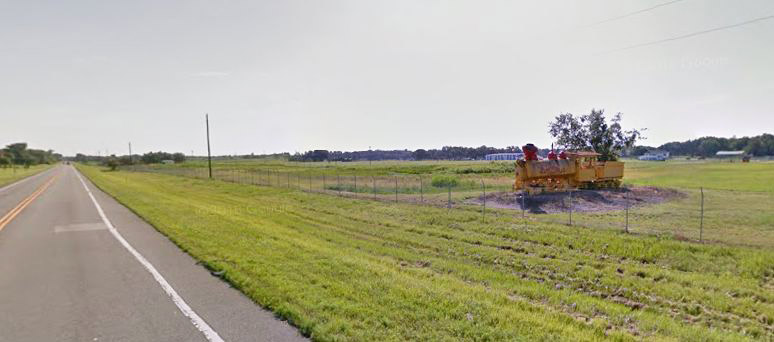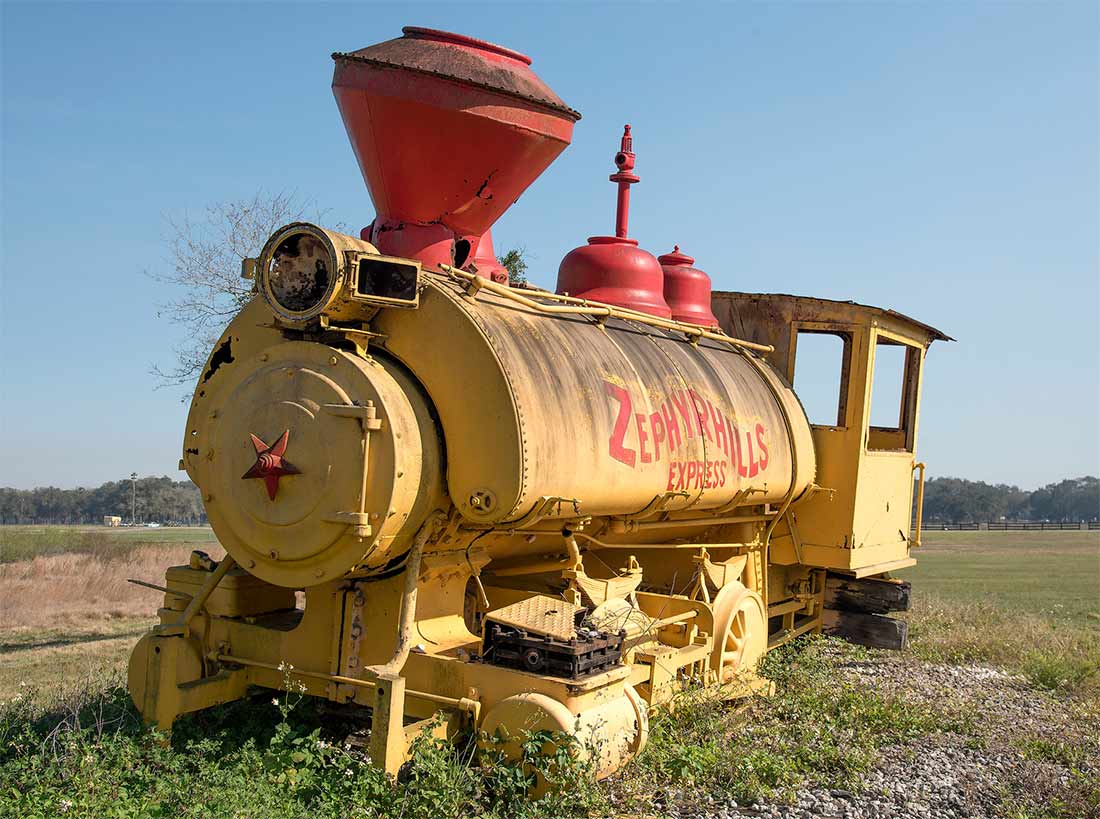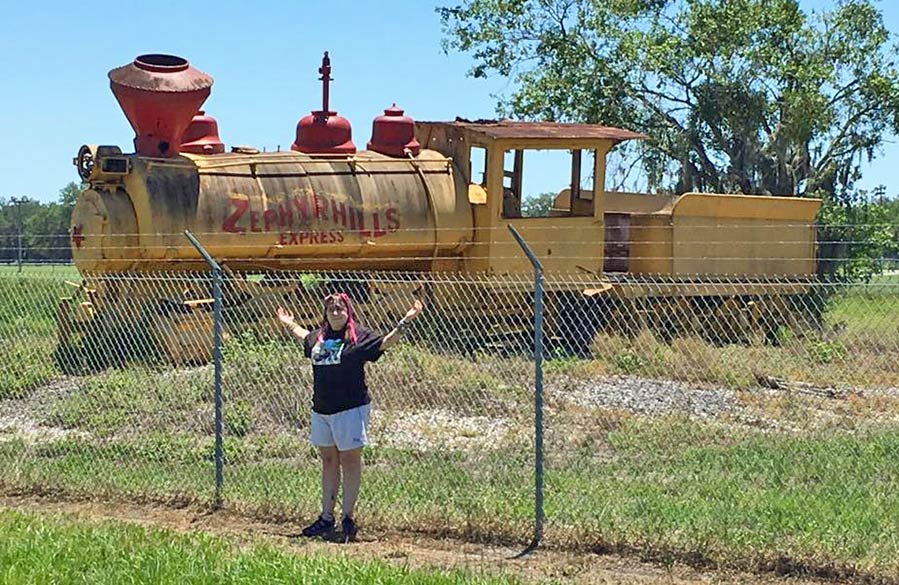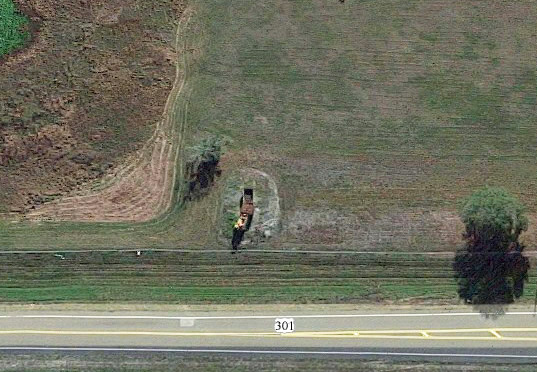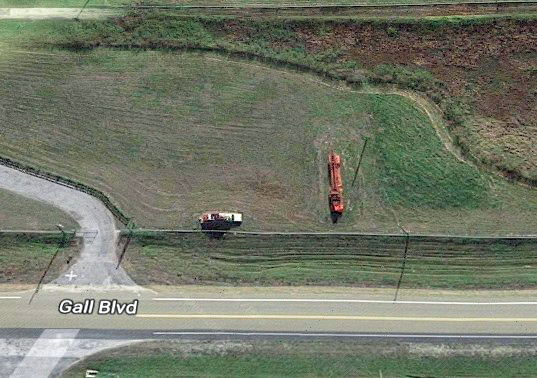|
MANUFACTURE & PHOSPHATE MINING YEARS
1907 - 1928
The
Lowry Park "Choo-Choo train" was a steam locomotive type
0-4-0T built
by the
Vulcan Iron Works foundry in Wilkes-Barre, PA. In 1907, the
Florida Phosphate Mining Corp. in Green Bay, Fla. ordered three Vulcan
locomotives, one of which was our Lowry Park "Choo-Choo."
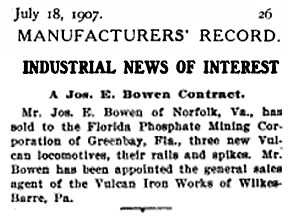 |
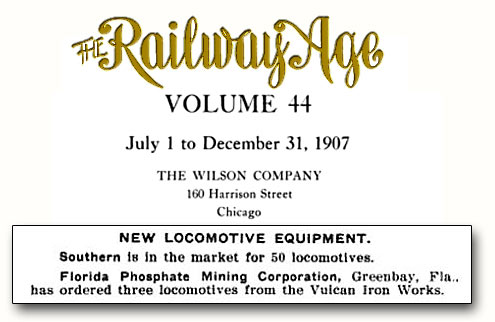
Railway Age, Vol. 44, p.131 |
|
Industrial Development and Manufacturer's Record, Vol. 52, p.26,
July 18, 1907. |
Green Bay was an early
phosphate mining community starting around 1907. It was located
about 6 miles southwest of Bartow and about 5 miles southeast of
Mulberry. Typical of a company town like many others in Polk
County, it was designed for workers and their families.
In
those days the phosphate mines were isolated and usually there were
few if any good roads leading to them, and even fewer workers with
automobiles to get there. Employers had to provide housing for their
workers or found it impossible to find help.
|
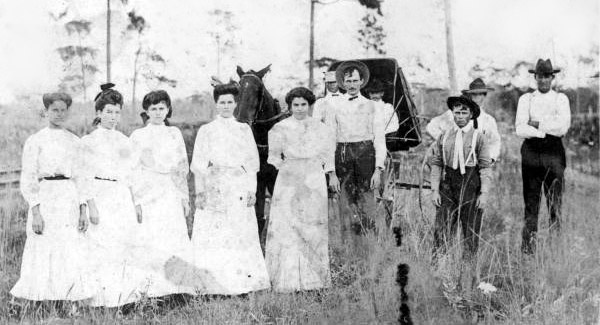 |
|
People assembled for
group portrait in the fields, 1916 - Polk County,
Florida
This gathering took place at the home of Frank Jones
in the area of Old Green Bay Mine, located about 6
miles south west of Bartow. L-R: Laura
Register, Callie Waters, Beulah Mizell, Jennie
Mizell, Nettie Taylor, Owen Mizell, George Reynolds,
R.M. Waters (Behind Reynolds), Frank Reid. In the
buggy are Joe Peeples and Sam Mizell.
State Archives of Florida, Florida Memory.
|
By the 1950s the
situation had changed, with phosphate and chemical operations filling
the area. The industry no longer needed to offer housing and the company
owned phosphate communities all disappeared.
This photo of phosphate
workers at Green Bay posing for a picture is courtesy of the State
Archives of Florida, Florida Memory project.
https://www.floridamemory.com/items/show/4404
|
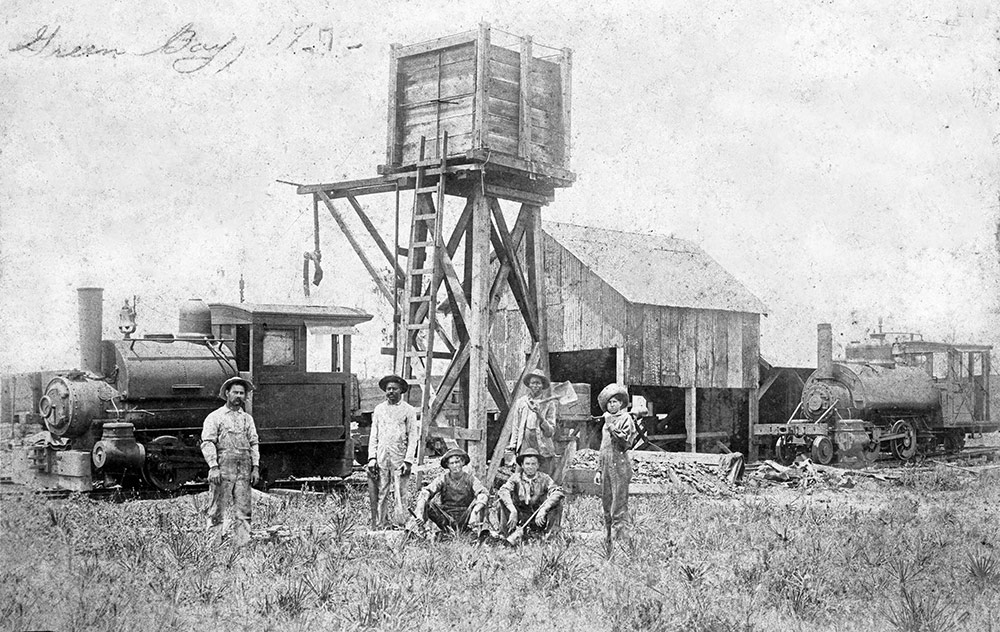 |
|
Phosphate workers posing for a picture, Green Bay, Fla. 1907 - Far
left: Joe Reid. Seated (L-R): Frank Mans, Sam Mizell.
Courtesy
of the State Archives of Florida, Florida Memory.
https://www.floridamemory.com/items/show/4404
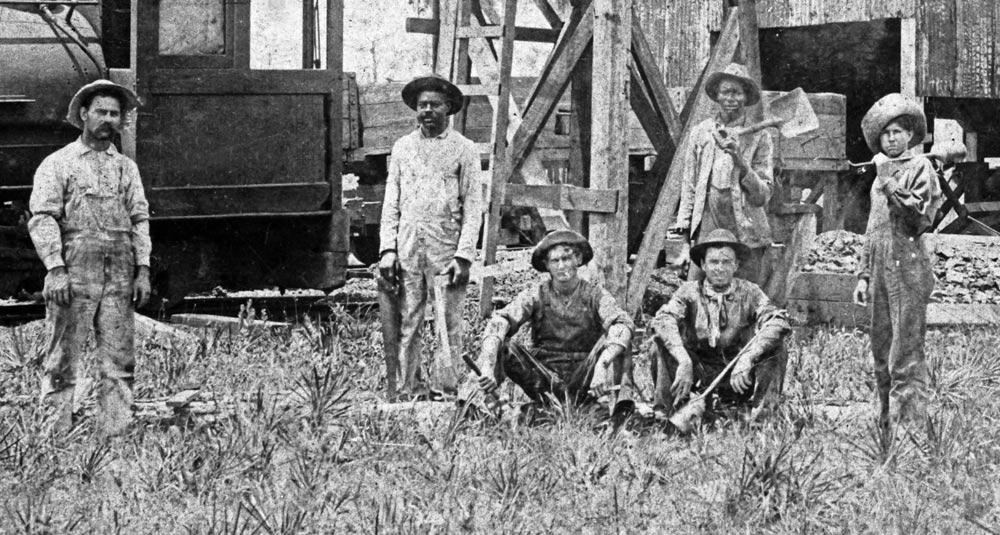
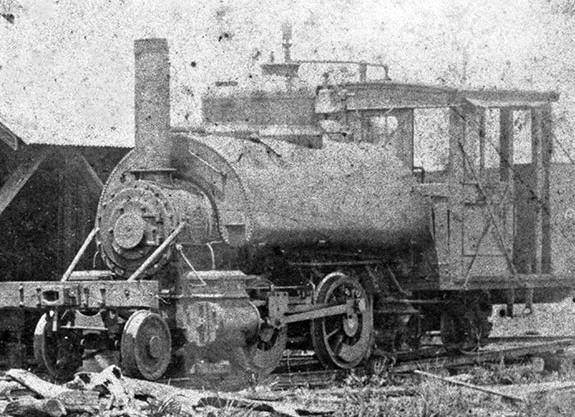 The Lowry Park engine
went into use in Green Bay originally as "Florida Phosphate #2." The Lowry Park engine
went into use in Green Bay originally as "Florida Phosphate #2."
It does not appear
to be in this photo; the two shown are similar yet have clearly visible
differences with the Lowry Park engine. A reliable source
(Steel Rails, Jan. 1953) states that our Vulcan locomotive left
the Vulcan plant in Sept. 1908. If the year of this photo is
correct, this photo predated the arrival of our Lowry Park
loco.
Our
Lowry Park loco was used by the Florida Mining Co. until 1928 to haul phosphate to various areas and probably into
Tampa where the phosphate docks were located on the west side of Seddon
Island.
In 1928 Florida
Phosphate Mining Corp. sold the Vulcan
locomotive to Dantzler Lumber Co. in
Tampa and it was renumbered 1147. (Steel Rails magazine, Jan.
1953)
THE DANTZLER LUMBER COMPANY - Background
|
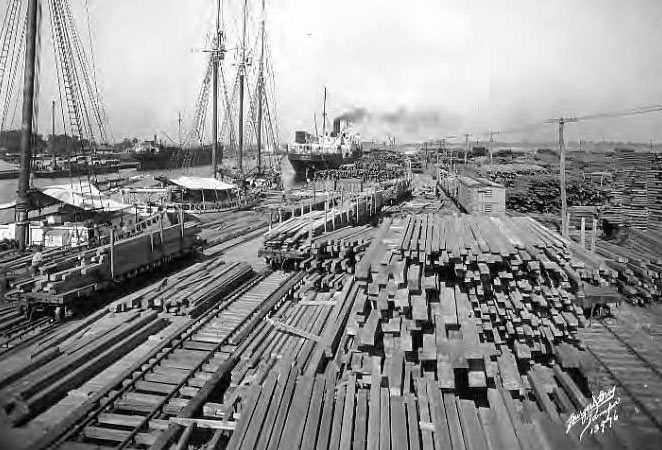
View of Roux-Askew & Dantzler
Lumber Yard on Seddon Island, April 29, 1925.
Burgert Bros. photo courtesy of the Tampa-Hillsborough County Public
Library System.
|
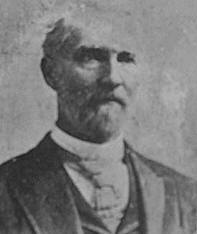 |
The
L. N. Dantzler Lumber Company had its beginning shortly before
the American Civil War, when William Griffin acquired a sawmill at Moss
Point, Mississippi. Griffin's daughter married in 1857 to Lorenzo Nolly
Dantzler who purchased the sawmill from his father-in-law in the 1870s.
Dantzler persuaded two of his sons, John Lewis Dantzler and L.N. Dantzler, Jr., to join
the company, and the three incorporated as the in 1888. The lumber company became the first privately chartered
corporation in Mississippi.
|
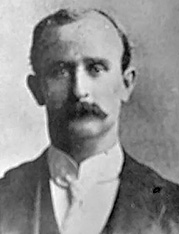 |
|
L. N. Dantzler,
Sr.
Photo from the Melvin Byrd collection at
Mississippi Rails |
For 20 years, the company relied on contract loggers to supply their
sawmills, but in the 1890s, the company began buying large tracts of
land to insure a more reliable source of timber. |
L. N. Dantzler,
Jr.
Photo from the Melvin Byrd collection at
Mississippi Rails |
By the 1920s,
L.N. Dantzler Lumber
Company had leased the shipbuilding plant
on the property of the Tampa Shipbuilding & Engineering Company
in Tampa
where it was in the business of building and repairing
wooden ships.
In 1924 the lumber interests of E. T. Roux and Harry Lee Askew were
purchased by Lorenzo Nolly Dantzler, Jr., and the name changed to
Roux-Askew-Dantzler, Inc., one of the biggest and most successful lumber
exporting companies in the Southeast, with E. T. Roux and
Harry Lee Askew as copartners. As the Roux-Askew Dantzler
Company, they had docks and a lumber yard on Seddon
Island. L.N. Dantzler, Jr. ran the company in Tampa with Harry Lee
Askew as Vice President. Later they became the Dantzler Lumber &
Export Company. In 1951, L.N. Jr. died suddenly of a heart attack
in Tampa.
Lumber World Review, Volume 49
Askew Family website
America's Maritime Progress By George Weiss
|
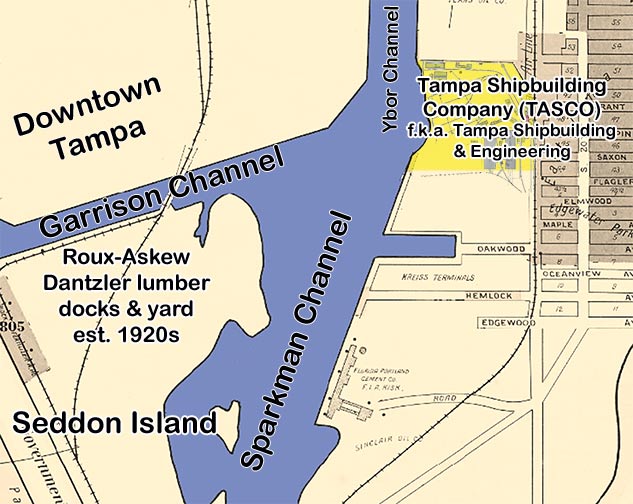 |
Tampa Shipbuilding &
Engineering (now Gulf Marine Repair) was founded in 1917 and
was a merchant ship builder. The yard built ships under the United
States Maritime Commission's pre-war long-range shipbuilding
program. Shortly after starting work on its initial USMC contract, it
got into financial difficulties and was sold to George B. Howell.
The new company was
called Tampa Shipbuilding Company, or TASCO. At its
peak, the yard employed 16,000 people and was the largest employer in
Tampa. TASCO closed at the end of WWII and few traces remain
of its facilities. The area is now Gulf Marine Repair, a Hendry
Marine Industries Company, at 1800 Grant St.
|
|
Tampa Shipbuilding & Engineering - The new company was called
Tampa Shipbuilding Company, or TASCO. |
|
| The
Burgert Bros photo
at right from the Tampa-Hillsborough County Public Library is titled "Sailors and
civilians along with military band celebrate E-Day at TASCO construction
yard" and is dated July 7, 1944.
When the Tampa Shipbuilding
Company won an "E Award" for its war construction efforts in
1944, Governor Spessard Holland joined in the celebration. The
Army-Navy "E" Award was an honor presented to companies during
World War II whose production facilities achieved "Excellence in
Production" ("E") of war equipment.
|
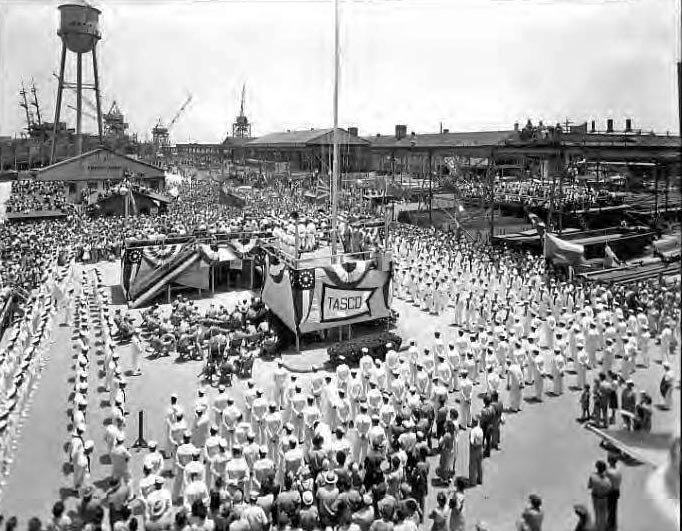 |
| Information
provided by Kermit Nelson from the book Tampa Bay Throughout
The TIMES - St Petersburg Times, 125 Years |
|
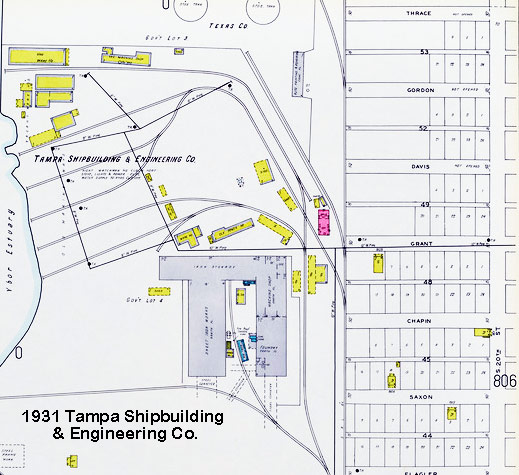 |
The configuration
of the buildings at the upper right of the photo correspond to
those shaded in gray on the 1931 Sanford Fire Insurance Map at
left. |
| |
|
| Aerial view of Tampa Shipbuilding Company (TASCO)
in
1946.
Burgert Bros.
photo from the Tampa-Hillsborough County Public Library System. |
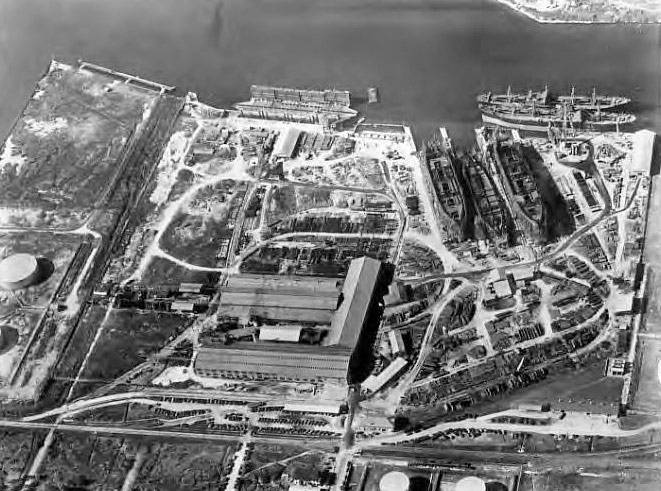 |
| |
|
THE
DANTZLER YEARS,
1928
- 1955
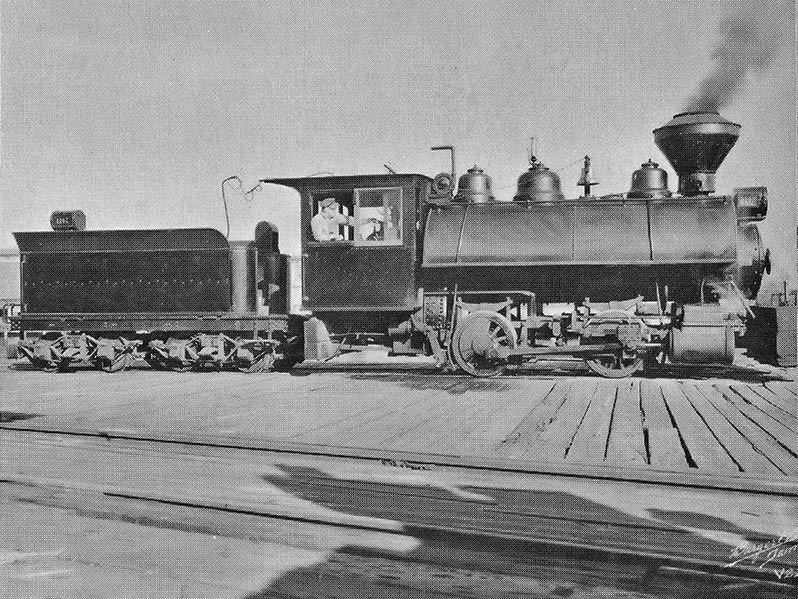
This Burgert
Brothers photo is
from Hampton Dunn's "Yesterday's Tampa" where he says
"Vintage of this old locomotive is not determined, but
it's an interesting reminder of the past."
She's
in great shape here, so probably from the very early
Dantzler years, 1928-1930.
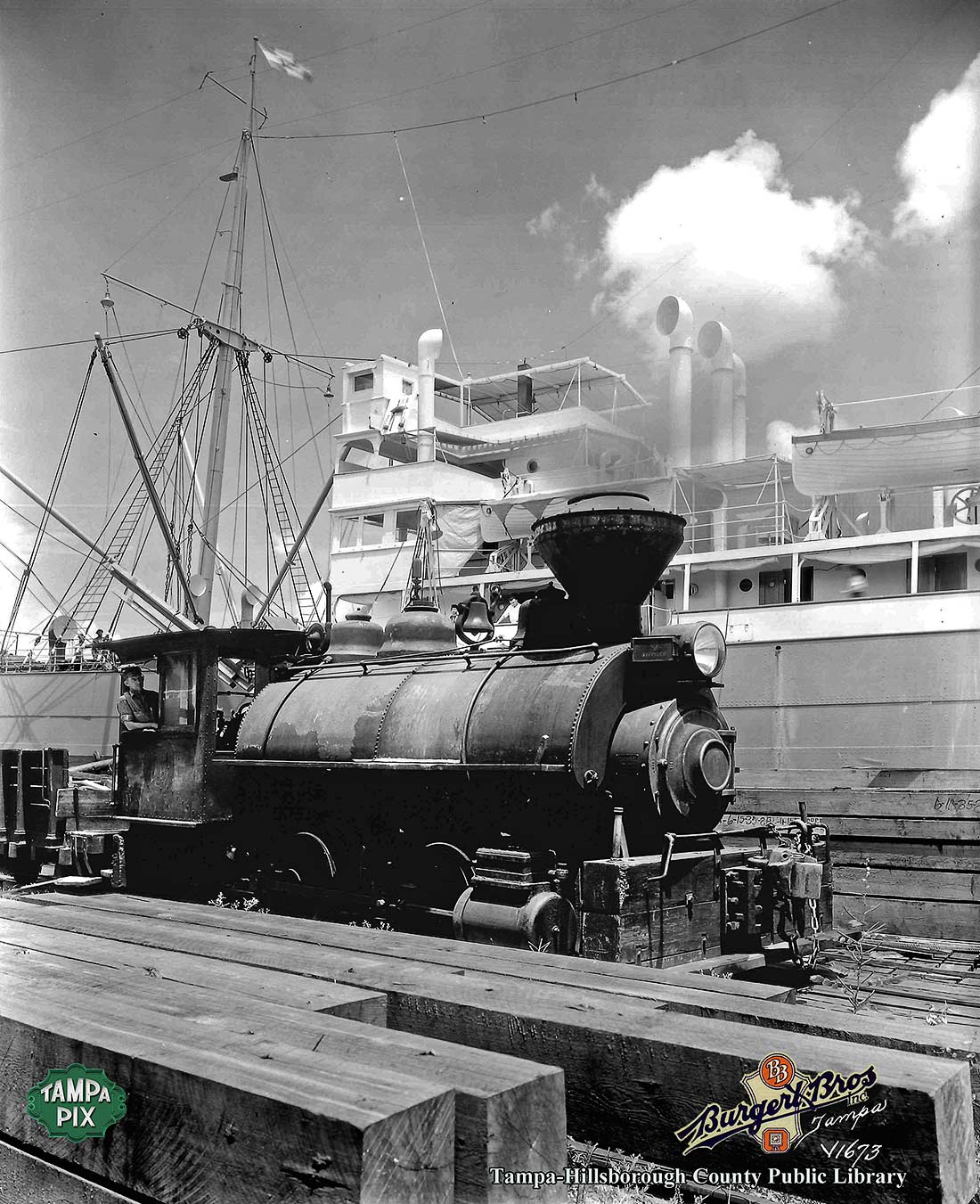
1935 at the Port of Tampa
Dantzler lumber yard
In the early years at Dantzler, before the engine
number was added and the star was added to the front.
Burgert Bros. photo courtesy of the Tampa-Hillsborough
County Public Library
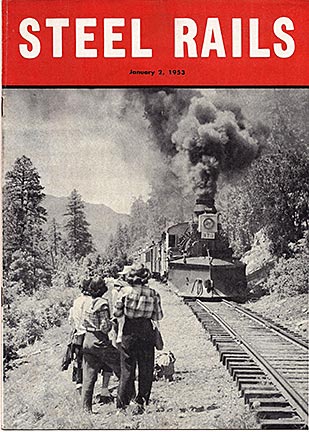
Our "Choo-choo's"
career with Dantzler is best explained by this 1953 article in
Steel Rails.
Special thanks
to Kimi Lau-Costanzo for locating an actual copy of this magazine
on eBay, purchasing it., and scanning it. The only library
that had it was located at Stanford University in California, and
they were less than cooperative when asked to send TampaPix a scan
of this article, a "teaser" of which was found on
Google Books.
A PDF scan of the article can be seen and downloaded here in a
TampaPix DropBox folder. |
FLORIDA’S WOOD BURNER by C.C. Campbell - Steel Rails magazine,
Jan. 1953
Florida’s shortest railroad is the mile-long tracks on Seddon
Island in Tampa Harbor, on which an antiquated wood burning steam
locomotive is still holding its own in these days of the modern
diesel.
Switching cars of lumber and empties back and forth between the
Seaboard Air Line tracks and the Dantzler Lumber Company’s Export
Docks, this short, stocky old wood burner was built by the one
hundred year old Vulcan Iron Works for the Florida Phosphate
Mining Corporation of Green Bay, Florida and left the Vulcan
plant in September, 1908. Purchased from the Phosphate
Corporation by the Dantzler Lumber Company of Tampa in 1928
at a cost of $2,000, this old locomotive has given them
nearly a quarter century of constant, faithful service. With
proper care, the locomotive apparently will be useful for many
years to come.
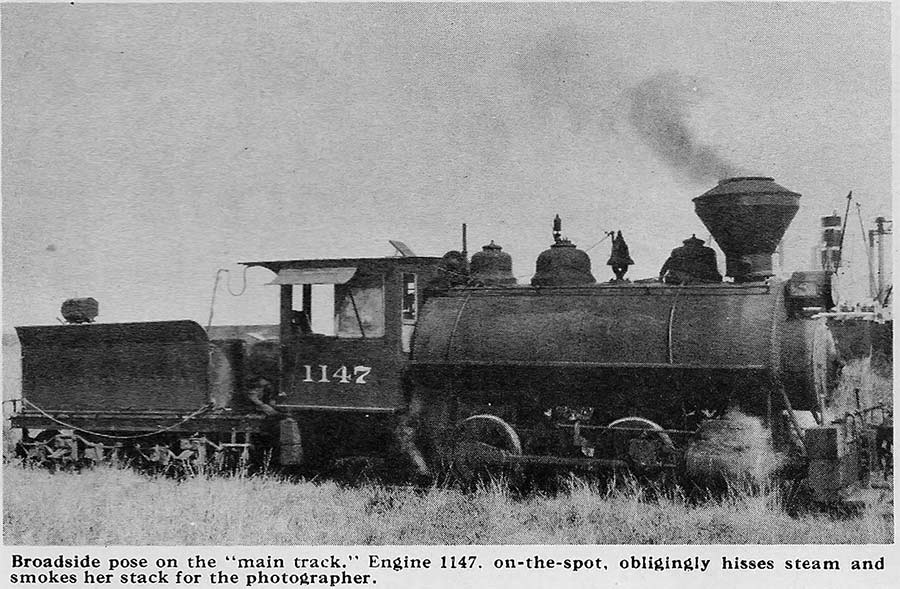
Originally built as a coal burner, Dantzler converted the old
engine to a wood burner by the installation of a cabbage head
stack,** furnished by the Vulcan Works, and a set of wood
type grates. A standard tender from a scrapped Seaboard engine,
with the top of the tank portion cut away made an ideal wood
tender and completed the conversion job. The boiler is equipped
with a saddle type water tank. Thus their fuel problem was quickly
solved. In normal times there is always enough scrap wood and
lumber around the yards, which costs nothing extra, to supply the
needs. About two cores are required for the average day's work.
**Regulations
provide that all wood-burning locomotives must be equipped with a
spark arresting stack, commonly known as the cabbage head type.
No. 1147 has not always burned coal or wood. During the Second
World War, when fuel was scarce, the old timer had a vital part in
handling millions of feet of lumber and heavy timbers which went
into large Naval and Air Installations in the West Indies and
other foreign points. During that period the engine was regularly
fired on coconut shells, very likely the only locomotive in the
world ever fired on such a fuel, or at least in the United States.
This fuel was obtained from a near-by candy factory which
processed thousands of coconuts each day. If you want a
rip-roaring, hot fire just try a few shovelfuls of the "monkey
fruit" shells!
Not only does the old wood burner handle eighteen to twenty cars
of heavy lumber per day and drag out the empties, but it also
unloads them. By the use a of gin pole and an arrangement of
pulleys and cables, the engine pulls forward lifting the heavy
timbers above car level where they are skidded onto the docks
ready for the ship's winch to take them aboard.
Nor has it always hauled phosphate and lumber. In the pre-war
years when some of the foreign countries were buying all the scrap
iron they could get, the engine was earning a nice income for its
owners by switching and providing power to unload thousands of
tons of scrap for a large salvage company. The scrap was loaded
aboard various foreign and domestic vessels.
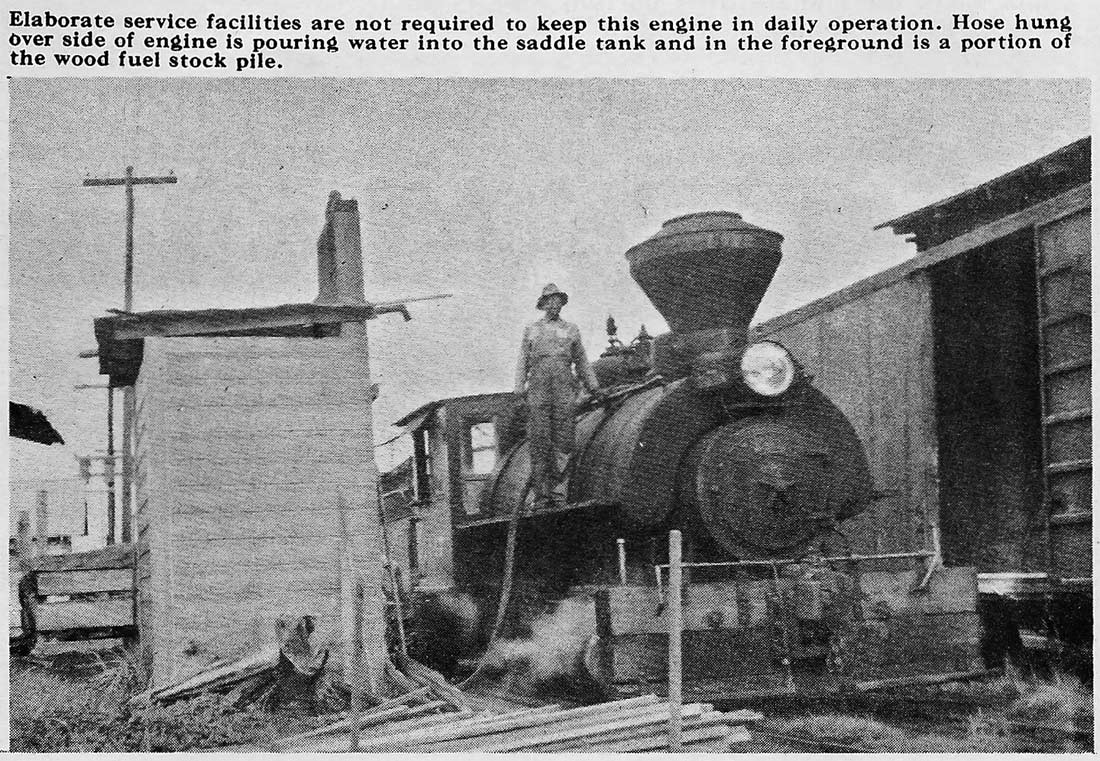
During the period of dual service a crew was unloading a car of
scrap and something with a familiar look showed up, it proved to
be a cylinder, piston, crosshead guide and brake rod from a sister
engine of the 1147. Just where the pieces came from was never
determined, but they were saved and some have since been used and
the rest are in the spare parts stock. What a break during the
struggles of war time! In the way the scrap later reacted against
us, it is very unlikely could the old engine express herself, that
she would be proud of that part of her accomplishments. To the
serious minded rail fan it is sad to think that eventually the
time will come when faithful old 1147, even with all her colorful
career and usefulness to mankind, will succumb to the cutter's
torch. One of her race will indeed be exceedingly hard to find.
The dock superintendent, who has controlled the locomotive
operations for these many years, holds an engineer's license.
Repair parts though seldom needed are still available from the
builders. The inspector reports the boiler in the best condition
of any burner or boiler in his territory. According to city code
it is inspected regularly once each month. Originally designed for
200 pounds pressure and inspected at the plant by The Hartford
Steam Boiler Inspection and Insurance Company, the working
pressure was 180 lbs., but the present working pressure has been
reduced to 120, though she operates nicely on 80 to 100 lbs. with
light load.
Vulcan locomotives carry a boiler serial number and date as well
as a construction number, which in this case is 1155, 7-30-07,
stamped in the boiler head and is as plain as the day it was
made. The engine stands 10'4" high, spreads to 8'6" wide and
stretches to a length of 23'2" to weigh 29 tons, in working order.
The 0-4-0 wheel arrangement has a 6'0" wheel base measurement. Two
13" x 18" cylinders through 2 inch diameter piston rods and
Stephenson link motion valve gear transmits the force to move the
36 inch drivers.
A bronze name plate bears a shop number 1147, which has been
adopted by the Dantzler Company as their road number. The
Company's rolling stock consists of the 1157
[sic]
and three ex-A C L flat cars of the old 4700 series. Of course
loaded cars, flat, box and gondola from almost every road in the
country find their way to the yards via the Seaboard Air Line
interchange. It is not uncommon to see 30 to 40 cars on their
tracks at one time.
This old engine operates almost as quietly and smoothly as when
new. It is cleaner than the average locomotive and if you think
the days of the wood burner are over, because most of them have
headed for the rip track or museum, the owner quickly tells you
that the 1147 is still a good engine. If you go over to the island
several years hence she will still be puffing away, with only
minor new parts and tires needed to keep her in efficient
operating condition.
|

THE SOL
WALKER YEARS
Sept. 1954 - circa 1964
Some of the information in the
next two sections was provided by a former employee of Walker,
Robert Bolesta, in a 2017 conversation with Kimi Lau-Costanzo.
Special thanks to Robert and Kimi.
After the death of L.
N. Dantzler, Jr. in Tampa in 1951, the company moved most of its
operations to Jacksonville. Old
No. 1147's
career hauling lumber and switching rail cars for Dantzler Lumber was
over, and it was sold in 1954 "for a few hundred dollars" to Sol
Walker & Co., a huge scrap metal salvage business. The engine remained on Seddon Island where, according
to Bob Bolesta, they nicknamed her "The Little Engine That Could"
because of its power and excellent running condition. Walker
used the old Vulcan wood-burning engine for a few more years to haul his scrap to
and from the shipyard docks and onto ships to be sent all over
the world. But on the east side of Sparkman Channel, Walker used an old switch engine
and cars that were already there because the tracks were too
narrow to accommodate the old Vulcan.
SEDDON ISLAND
WOOD BURNER IS 47 YEARS OLD AND STILL CHUGGING - Tampa Tribune -
Dec. 5, 1954
|
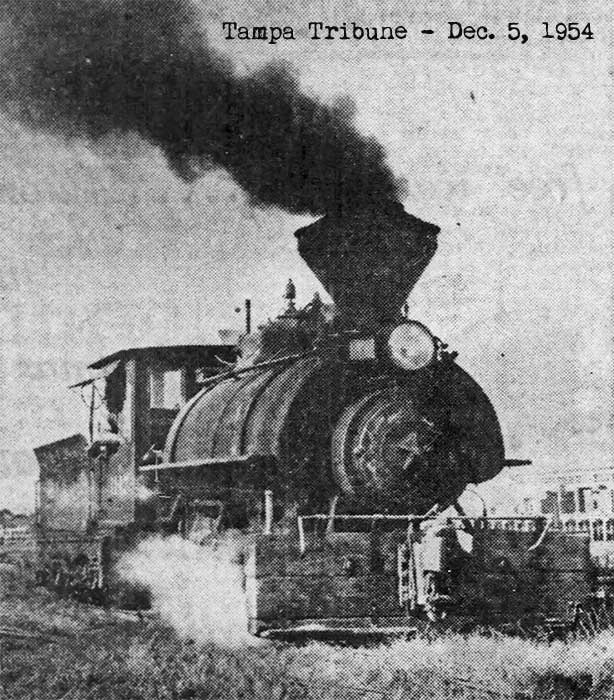 |
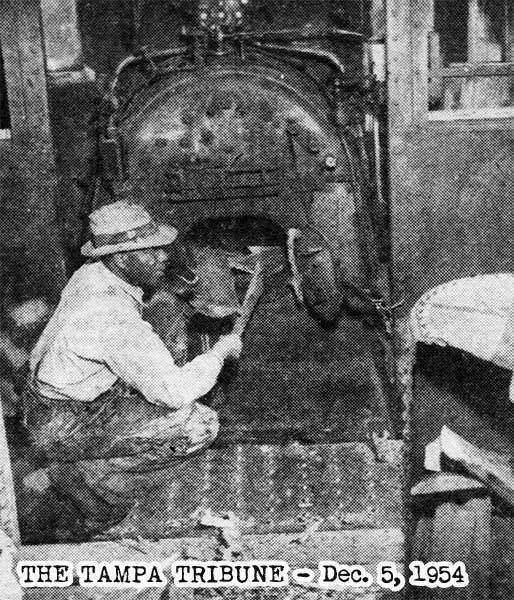 |
|
1147 STILL CHUGS ALONG--This old wood-burning
engine goes about its daily task of hauling freight cars loaded
with scrap steel on Seddon Island. Built in Pennsylvania
in 1907, it is six years older than an inactive relic recently
found in Bradenton. |
TRIPLE THREAT - Henry Mickens, engineer of 1147, is also
her fireman and conductor. Here he throws pieces of pine
wood into her old firebox. (Trib photo by Ed Sessions). |
|
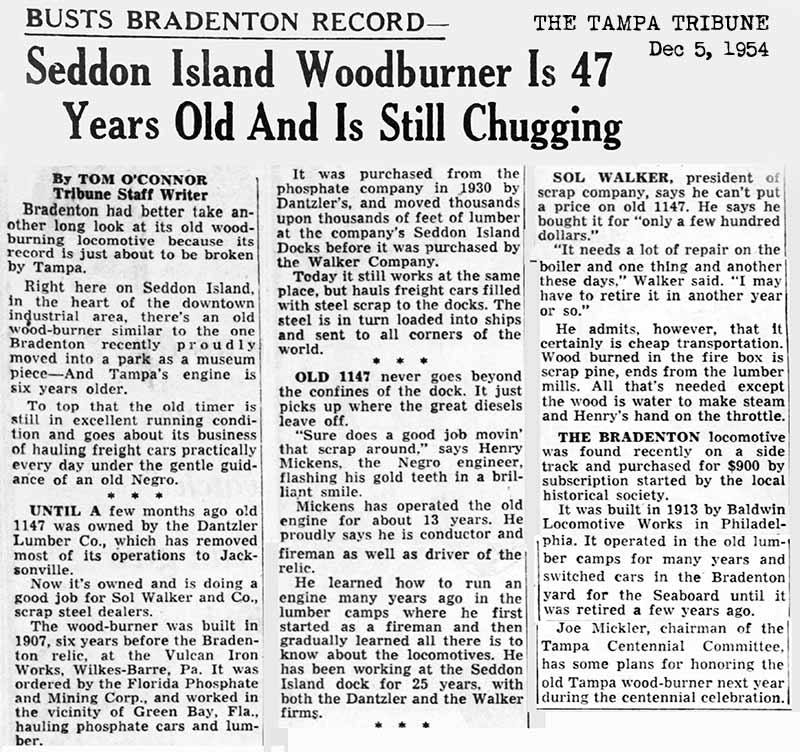 |
|
Solomon "Sol" Walker was born in St. Louis and came to Tampa in 1925
at the age of 10. He was a successful business owner and operator of Sol Walker & Co.
for 55 years, the owner of Stalnaker Farm and Ranch Supply Limited, and
the owner of Gulf Coast Recycling.
Walker began
his scrap iron business by March, 1942, using the Dantzler
docks and the docks at the shipyards to load and unload his
scrap and would send what wasn't being shippedto his scrap yard on Adamo Dr. at
34th St.
On Jan. 2, 1948, he incorporated as "Sol Walker
& Co."
|
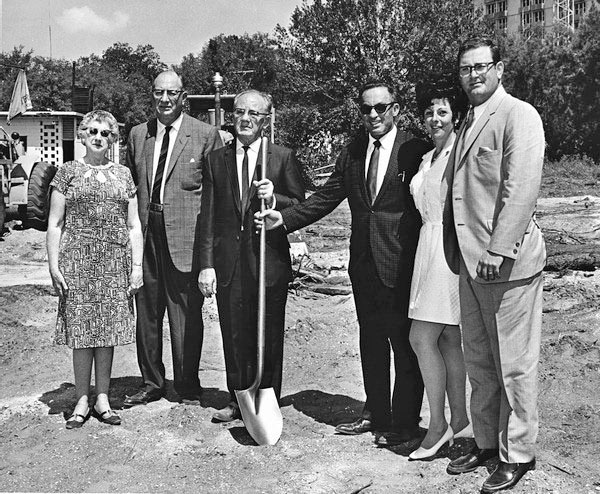 |
| |
Groundbreaking for new
synagogue. 1968, Walker wearing sunglasses.
L to R: Elizabeth Berger, Leo Levinson, Manuel Aronovitz,
Sol
Walker, Elaine Levinson, Bob Levinson.
State
Archives of Florida, Florida Memory.
|
THE
MOVE FROM SEDDON ISLAND TO FAIRYLAND
By 1958, "The
Little Engine That Could" couldn't anymore. It sat
rusting away on Seddon Island. In late November, of that
year
it was discovered by Ernest V. Reed, Jr. who suggested it
should be saved and placed at Fairyland in Lowry Park.
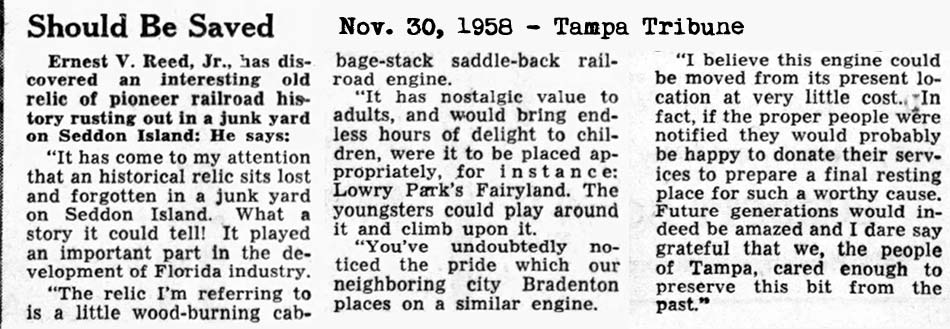
|
STILL ON SEDDON ISLAND - May
17, 1959 In May of 1959, another
"discovery" of the locomotive was made by "Frog" Smith and once
again, it is suggested that the "grand old wood-burning
locomotive" be rescued and preserved--"What a
pity to let such a venerable old engine rust away when its
rightful place is some park." "Old 1147 is standard gauge of
four foot eight and a half inches, and would make a fitting
monument anywhere, being six years older than old No.2 in
Bradenton. Already in Tampa, it can still run." He
goes on to say that this engine must have had some excellent
care in its day; her firebox was still in good condition, and
that was the part that suffers the most. |
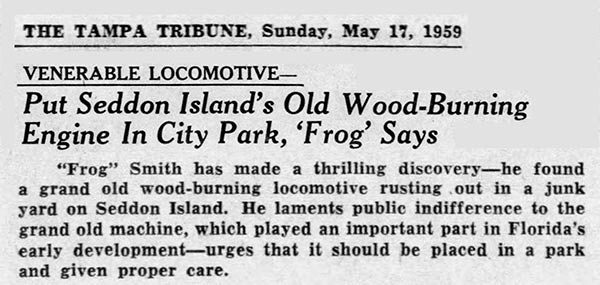 |
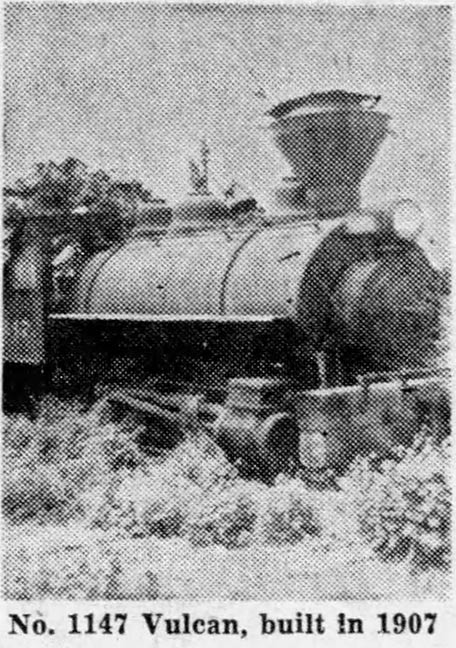 |
|
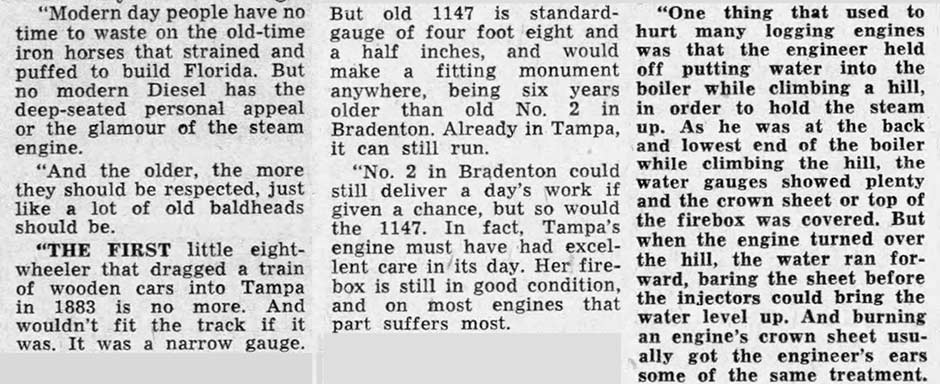 |
|
STILL ON SEDDON ISLAND - April 21, 1963
Although it is not
mentioned in this brief 1963 article about Seddon Island's past, our
"Little Engine that Could" can be seen in the lower left corner,
captioned "Old locomotive testifies to 195-acre island's past as
a railroad phosphate terminus." (This locomotive wasn't
used to haul phosphate, it
was used by Dantzler to switch lumber-laden cars.
Afterward it was sold to Sol Walker who used it to haul scrap
metal.) |
|
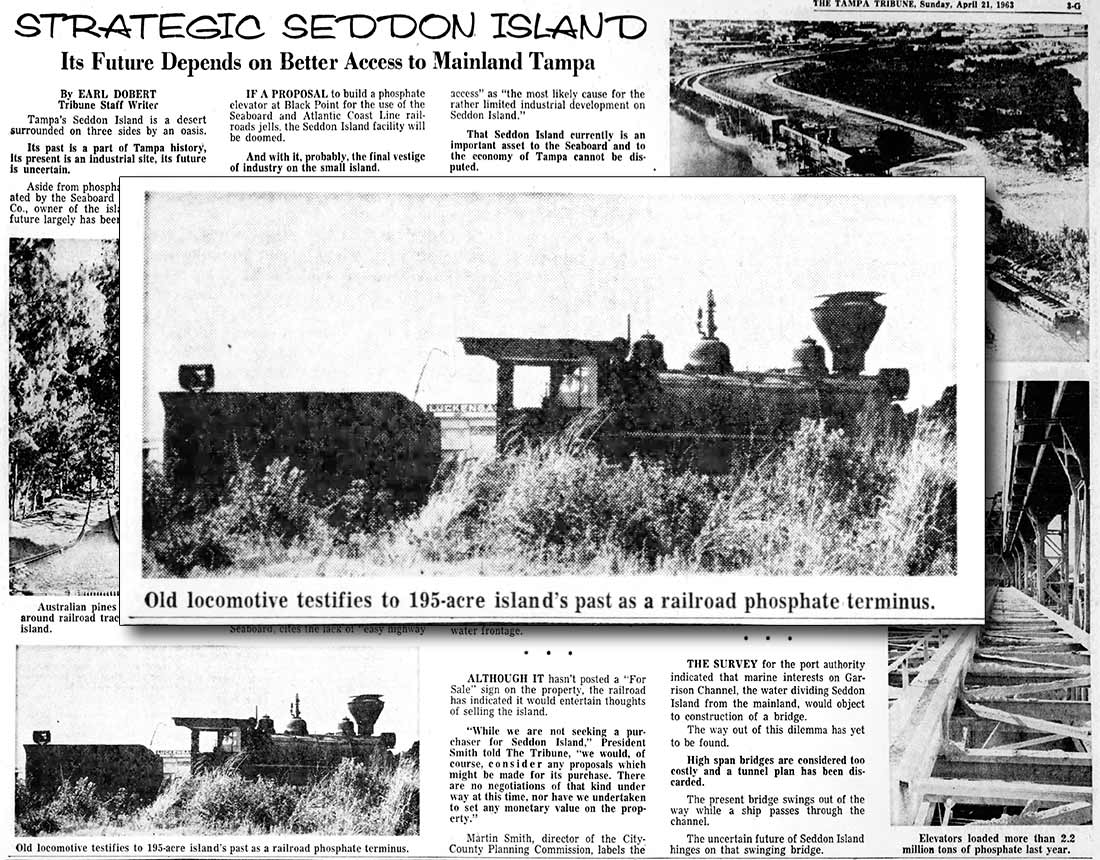 |
| |
|
ALREADY
AT FAIRYLAND BY DEC. 17, 1964
In
December of 1964, Tampa model railroad hobbyist Chester Holley
mentions the old locomotive when he became frustrated with the
high prices of getting one of his own locomotives moved.
"ACL, truck companies and house movers want too much money for
the moving job... " So he planned "to ask Mayor Nuccio how
he had Lowry Park's Fairyland locomotive moved from Seddon
Island."
This could mean that the locomotive was moved during Nick Nuccio's term as mayor of Tampa. His 2nd term started Oct. 1,
1963. By the time of this article, it had been moved.
So
the move to Fairyland would have been between Oct. 1, 1963 and Dec. 17, 1964. |
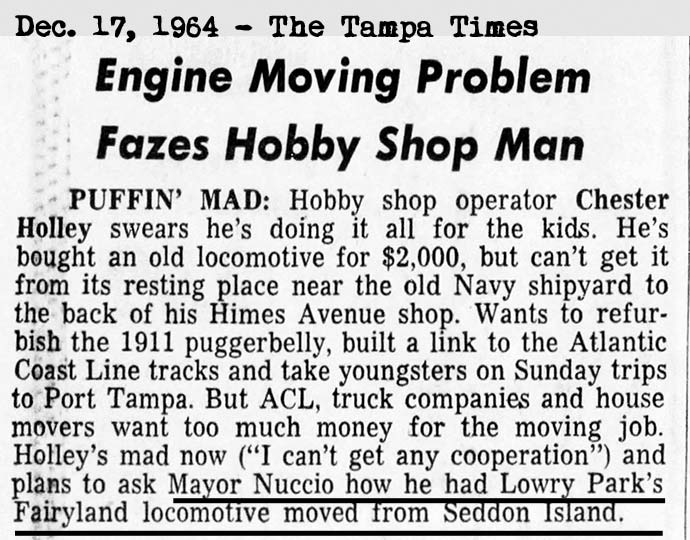 |
THE LOWRY PARK
YEARS circa 1964 to 1989
Sol
Walker was in
business with his half-brother
Irving "Izzie" Oster,
who gave, loaned or sold the locomotive to the City of Tampa
for placement at Lowry Park by December 17, 1964. Early
brochures of Lowry Park don't mention the locomotive.
|
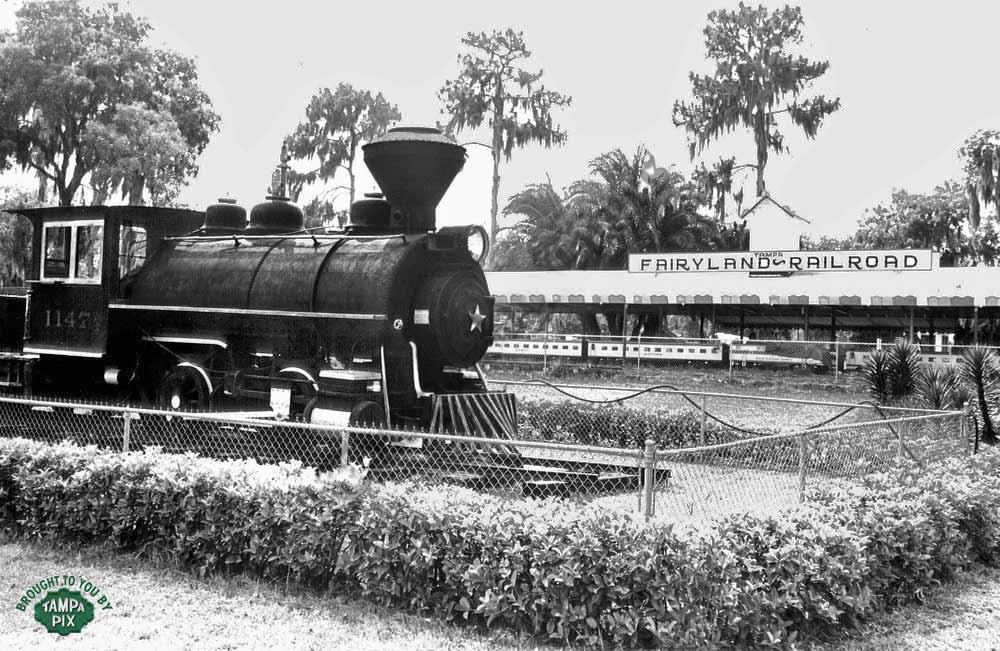 |
|
May 19,
1965 - Old #1147 proudly displayed at the Fairyland
Railroad Station
Photo by TBT
archives
|
|
Local band
"The Rovin' Flames--Ready for Action" on the Lowry Park fire
truck.
The locomotive can be seen at the
left of the photo. |
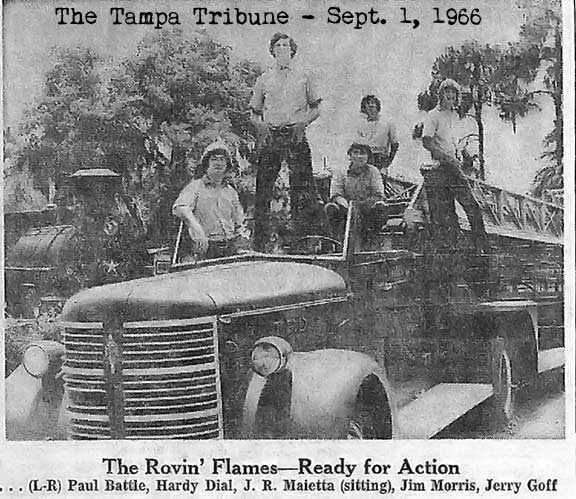
|
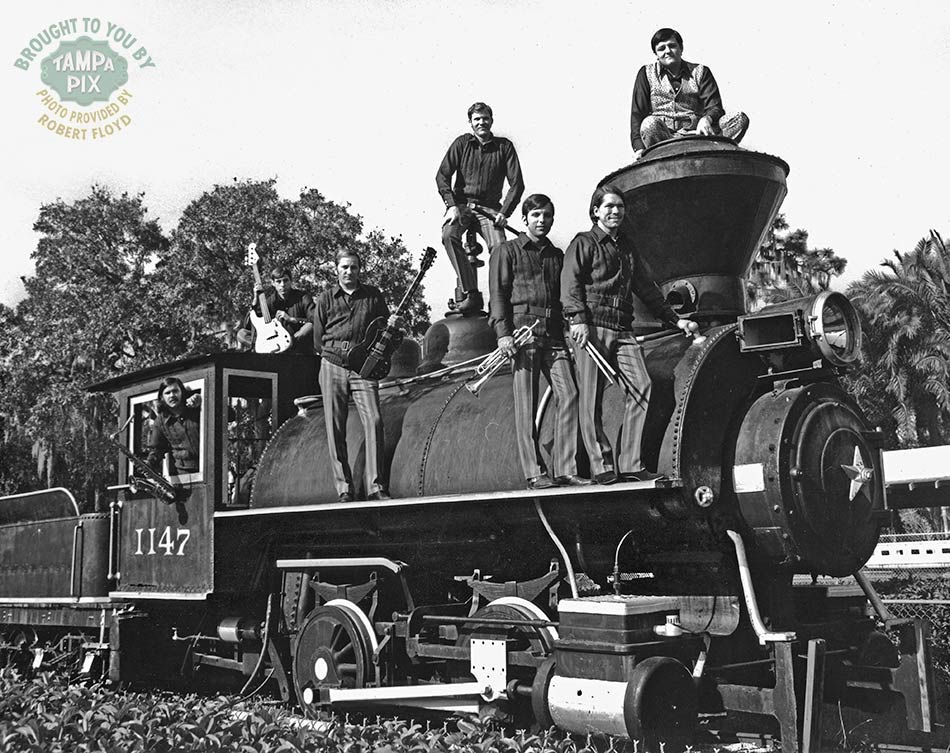
The
Glades, circa 1970
Right to Left -- Tommy Mullins (vocals), Lynn Burnette
(drums), Dennis Clark (trumpet), Alan Hoak (alto sax), Jim
Morrison (guitar), Tom Brown (bass/Hammond B3), Bill Orr
(tenor sax).
Dr. Bill Orr was a Chamberlain Grad who was the principal at
Hillsborough High for a number of years.
Photo and description provided by Robert D. Floyd.
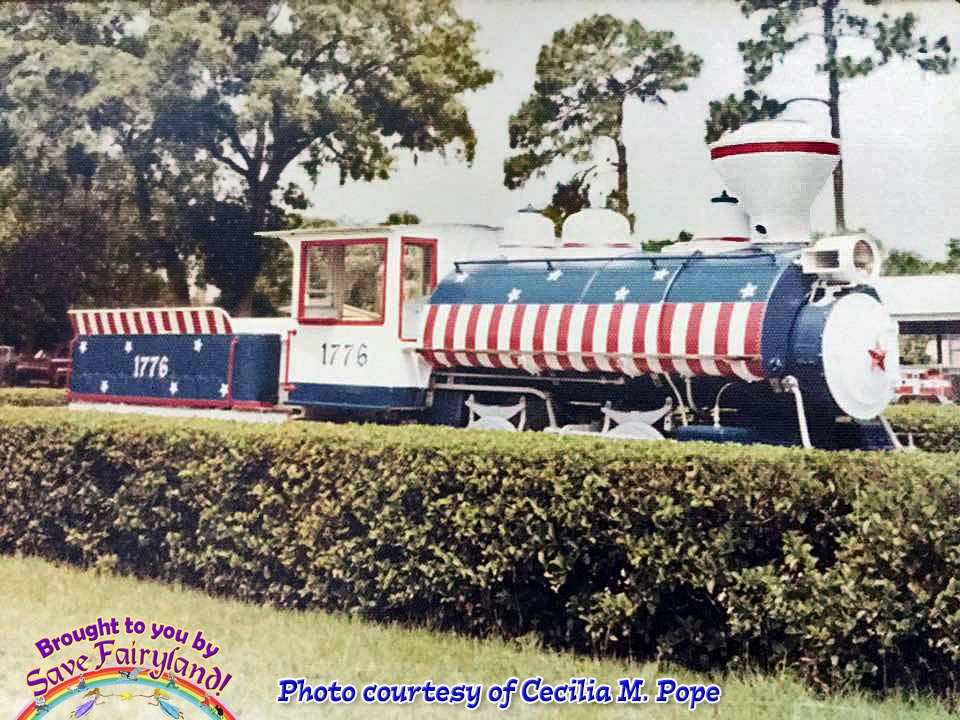
This rare photo of the Choo-choo dressed up for the
USA bicentennial in 1976 was provided by
Cecilia M. Pope at the
"Save
Fairyland" Facebook group.
Sometime
after the 1976 photo, the Choo-choo was repainted in black
and renumbered 6090; it is not known why.
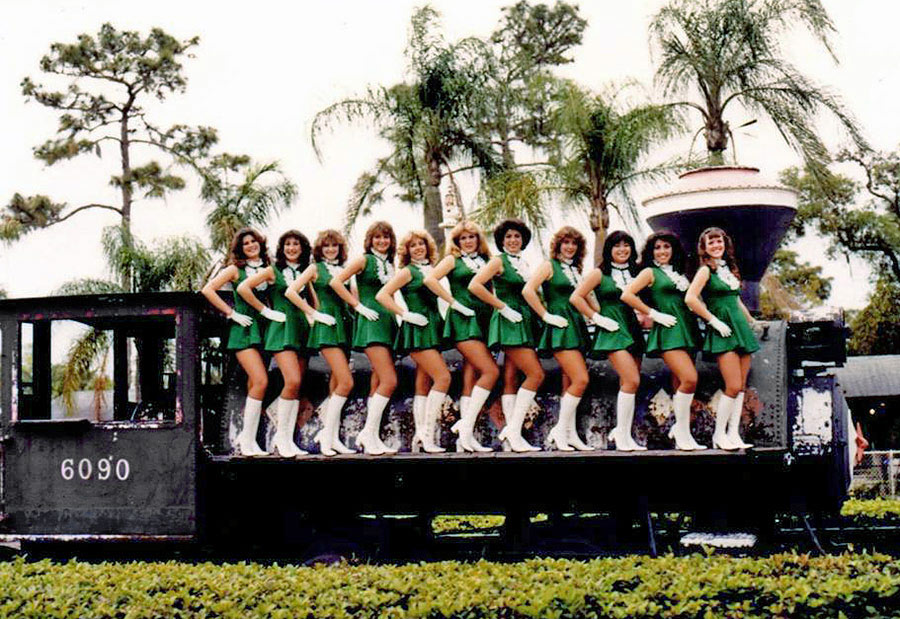
The Tampa
Catholic High School Dancerettes on the choo-choo train, Fairyland, 1982.
(L-R) Michelle Barreiro, Aileen DeArmas, Jama Coley, Anna Vito, Jenny
Sincell, Candyce Forrester,
Lori Giglio, Myra Pita, Nga Nguyen, Christina Vasquez, Celeste Liccio.
Thanks to Kimi Lau-Costanzo for providing the names from her TC
yearbook.
Photo by Ralph Owen Dennis.
LOWRY PARK
ZOO RENOVATION SEES CHOO-CHOO AS OBSTACLE TO PROGRESS
By the 1970s, the Humane
Society called Lowry Park's zoo “one of the worst zoos
in America.” In 1981 the parks
department and Citizens Advisory Board called for improvements,
so Lowry Park Zoo Association was formed in order to raise awareness of
the Zoo and promote
funding the renaissance of it.
Soon afterward, the Zoo Association started on a $20 million capital campaign,
and the City of Tampa committed $8 million.
In 1984 a master plan was developed, and in 1988 the Zoo Association became the Lowry Park Zoological
Society, a private, independent, nonprofit organization dedicated to the
management and ongoing development of a superior zoological garden--it was no
longer owned by the City of Tampa Parks Dept.
After several years of
fundraising, the original Lowry Park Zoo closed with a ceremony on Monday, September 7, 1987
at 6pm for its $20
million reconstruction.
About a year into the
renovation, it was announced that the old Choo-Choo had to go. It was
deemed an impediment to the progress of the zoo expansion. The zoo development
director said she hoped someone would take it and restore it, but if not, it
would be destroyed in order to build a parking lot.
|
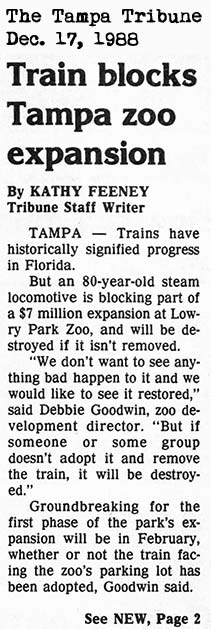 |
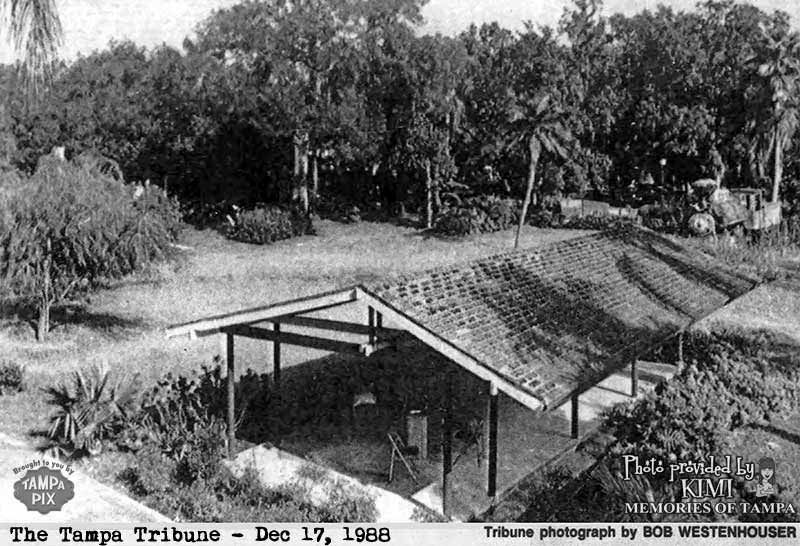
The 80-year-old steam locomotive at right blends
into the scenery at Lowry Park Zoo, but it's in the way for officials
planning a $7 million expansion. They would like it restored. |
| |
|
|
The president of the Florida Gulf Coast Railroad Museum wanted it, but
their facility would not be opening for another 6 months. He
estimated it would cost around $2,000 to have it moved to Parrish, Fla.
where the museum was being prepared--funds he didn't have. The zoo
director discussed possibilities with the museum president, who said he
wanted it because it is a steam locomotive, and because it was part of
Tampa's history.
 |
A little
over a year later, a plan to save the Choo-Choo was
developed.
|
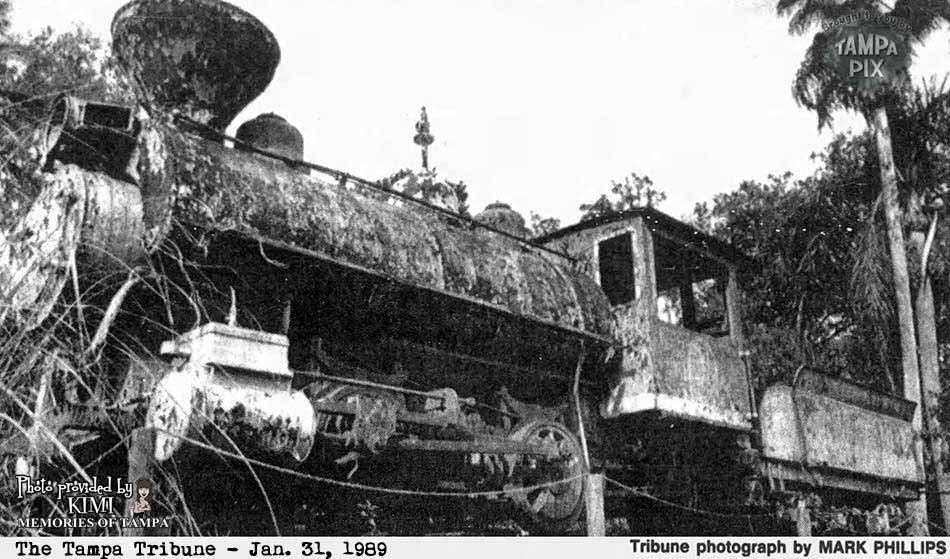 |
|
The
81-year-old locomotive that sits near the entrance of
Lowry Park will be moved Saturday (Feb. 4) by the Florida Gulf
Coast Railroad Museum, which plans to restore the 30-ton
train.
|
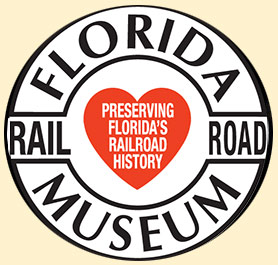 It was decided
that for $1,000, they would have the engine moved from Lowry
Park to Sol
Walker scrap metal company, then when the museum in Parrish,
Fla. was finished, they would spend another $1,000 to move it
to the museum from Walker. So "The Little Engine That Could" was
back with Sol Walker, but this time on his salvage lot on
Adamo Dr. It was decided
that for $1,000, they would have the engine moved from Lowry
Park to Sol
Walker scrap metal company, then when the museum in Parrish,
Fla. was finished, they would spend another $1,000 to move it
to the museum from Walker. So "The Little Engine That Could" was
back with Sol Walker, but this time on his salvage lot on
Adamo Dr.
At the time
the locomotive
was sent to Lowry park from Seddon Island, it was
rusty, but still in operable condition. But when it was removed from
Lowry Park and was sent back to Sol Walker, the engine was no longer usable.
It was covered with rust, missing bells, whistles, and both
steam and brake gauges. The
brass fittings and valves, along with various other vital
parts, had been stripped.
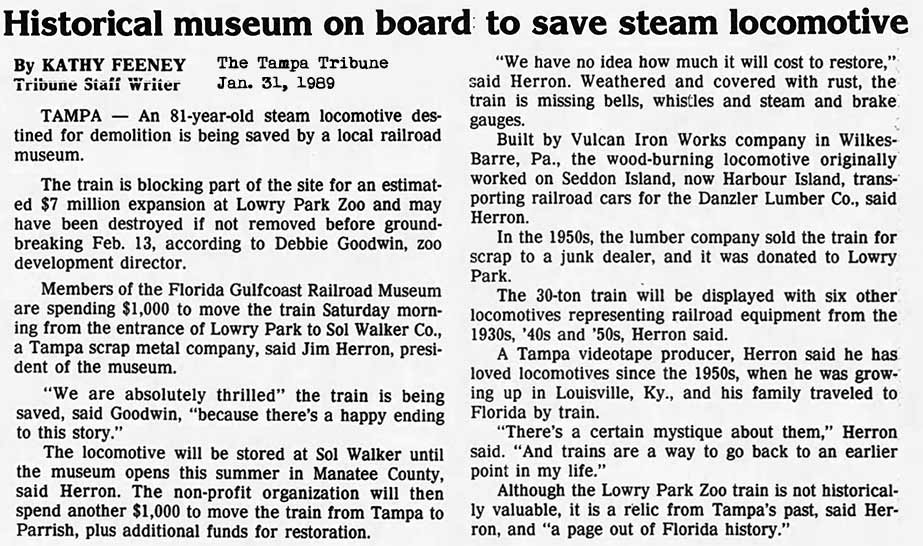
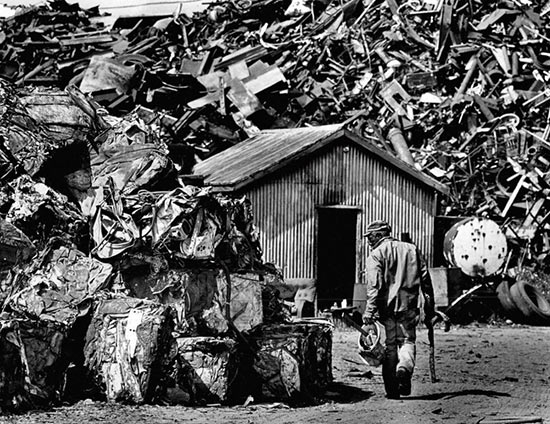
Nov. 1987 -
Earl Minniefield is the Earl of Iron at Sol Walker and
Co's scrap metal field at the Port of Tampa. Since the
age of 21 - he is now 60 (in the photo) andstill carries a torch. |
No further
information concerning the locomotive has been located after
the January 1989 articles. It appears that the plan was
delayed for reasons unknown to TampaPix.
The
locomotive sat at Sol
Walker for as many as 10 years. According to Bob Bolesta, there was an interest
from Caribbean islands and South American entities to purchase it, but when
prospective buyers saw the condition it was in, they changed their
minds.
*Special thanks
to Kimi Lau-Costanzo who spoke with Robert by telephone to get the Sol Walker years story, and with
the city of Zephyrhills Library for info on the engine's
current location. |
|
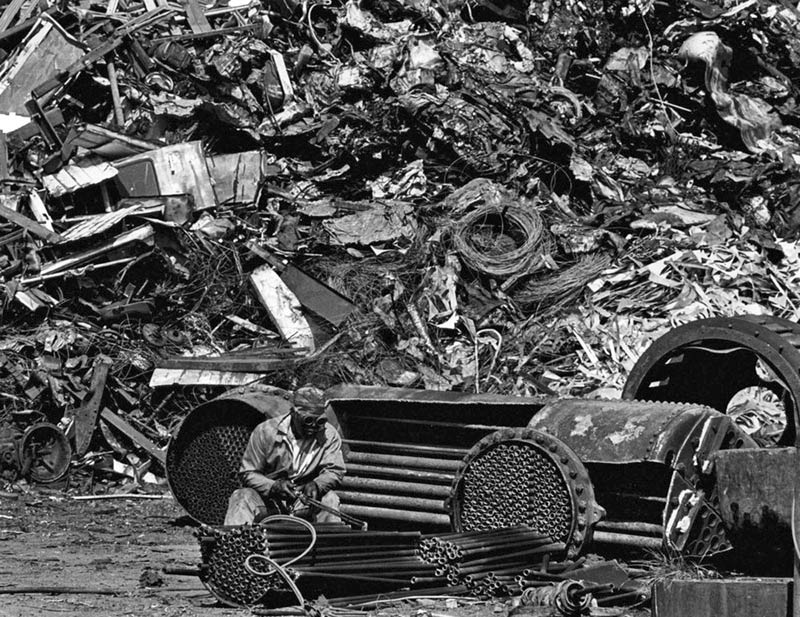
Photo from TBT archives |
**Sol
Walker years info sources: Robert Bolesta memories,
Steam Locomotives note by Don Hensley of Taplines, and
Steam Locomotive Ownership Info.
.

|
FROM THE
SCRAP YARD TO
THE
FLORIDA RAILROAD MUSEUM to
ZEPHYRHILLS FESTIVAL PARK--THE MIKE
SIERRA YEARS
According
to Tampa businessman Mike Sierra, the old engine spent many years sitting off Adamo
Drive at Walker's yard, unable to sell it. It was
finally sent to the
Florida Railroad Museum* in Parrish, Fla. around 1997 where it was on
display on a small piece of track for a very short time.
If anything was done, it may have been repainted all black.
**Steamlocomotive.com
also indicates that the engine was sent to the Florida
Railroad Museum in Parrish, FL, but when contacted on June 3,
2017, the manager at the museum said he had no recollection of this
locomotive being there.
Mr. Sierra didn't
recall exactly when, but guessed that "around 10 years ago, or
maybe longer," the museum was having some financial
difficulties so he reached an agreement for services rendered
to the museum. In lieu of payment, Sierra accepted the
old black locomotive.
In early June of 2017, a
librarian at the Zephyrhills library also said it was black
when she first saw it and was already at its present location
when she moved to Zephyrhills around 1998**.
**Florida Steam Locomotives
also indicates 1998. |
| |
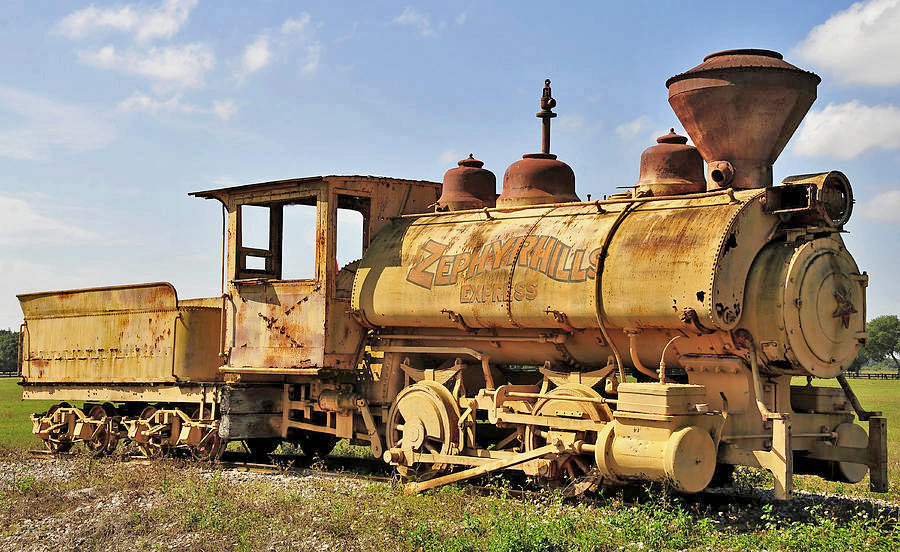
The train in its current yellow
(and RUST) color is now located on the east side of US 301 in
front of Festival Park. Just about one mile south of Chancey
Rd in Zephyrhills. The festival location "Zephyrhills Auto
Events" is 2738 Gall Blvd, Zephyrhills, FL 33541. 2012
photo from the Florida Railroad Museum. Notice the same engine
tender car as the Dantzler Lumber photo.
|
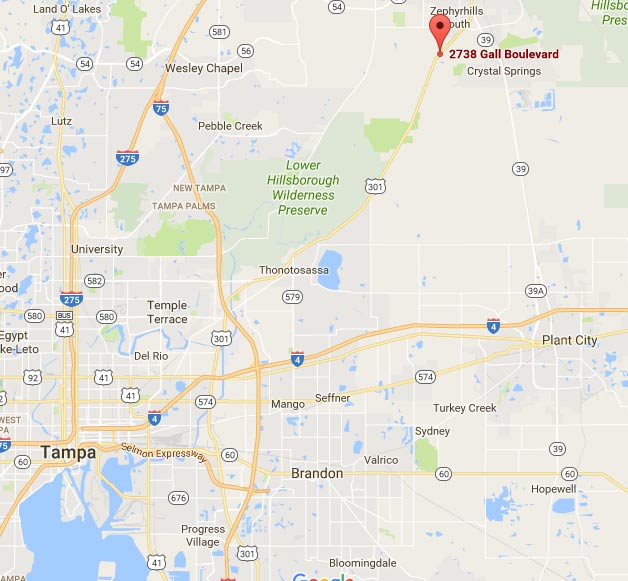 |
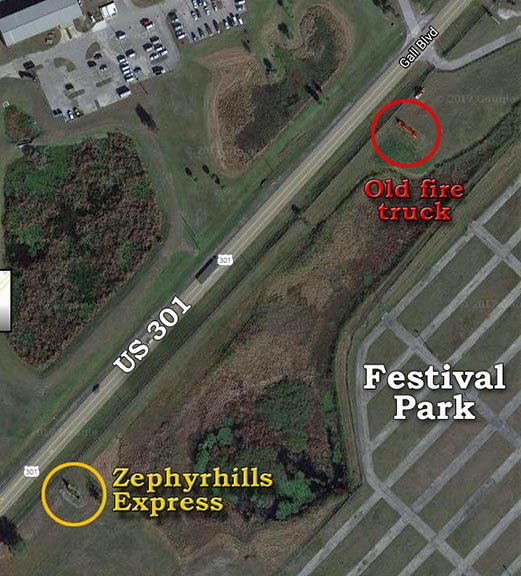 |
|
The Zephyrhills
Express is located about 27 miles northwest of Tampa on US Hwy
301, just south of Zephyrhills. |
TampaPix is grateful and wishes to acknowledge and thank
Kimi Lau-Costanzo and Kermit Nelson for their persistence and
determination to fill in this "puzzle piece," as
well as Mike Sierra for providing the puzzle piece.
After researching and determining the owner of the property
where the old engine now sits, Kimi & Kermit made numerous
attempts to make contact with various individuals and
businesses by phone messages and letters.
On Aug.
15, 2017, Kimi received a phone call from Mike Sierra, Tampa
businessman and Zephyrhills Express owner.

Mr. Sierra said getting it
to Festival Park was no easy or inexpensive task. A crane was used to lower it onto a
lowboy flatbed
trailer. He constructed the small piece of track
that it now sits upon at the park and very soon afterward painted it
yellow to use it as a sort of landmark symbol of Zephyrhills
and to act as a billboard for events at
Festival Park.
The old
locomotive was a popular hang-out for the patrons of the
"Livestock" rock music fest held there in the 1990s to the
early 2000s.
Mr. Sierra
acknowledged that it has deteriorated over the years, but he
has no future plans to attempt to move or refurbish it as it
is now in such a delicate and rusted condition.
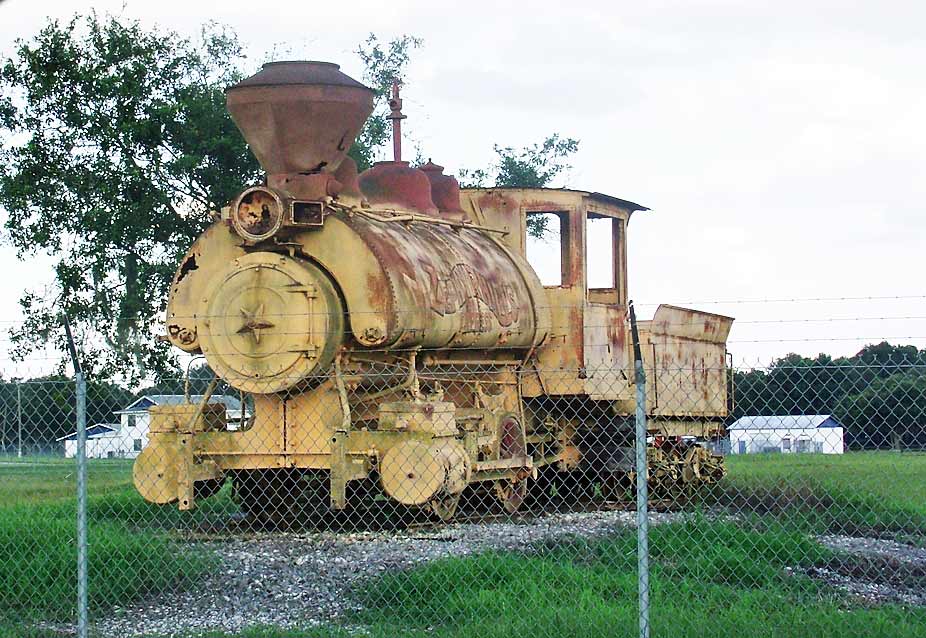
Photo
posted by disneymamom at Viewbug.com
June, 2013
|



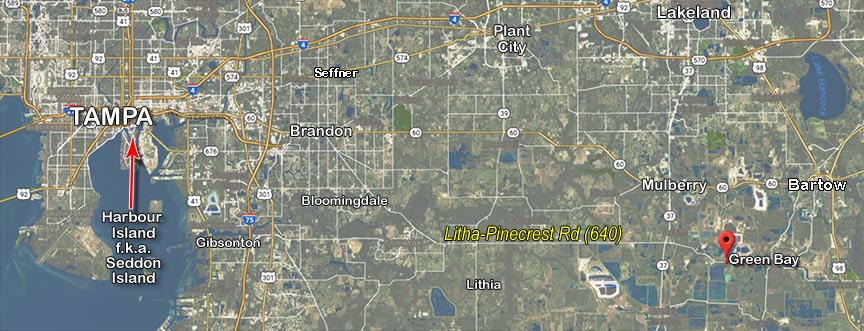



 The Lowry Park engine
went into use in Green Bay originally as "Florida Phosphate #2."
The Lowry Park engine
went into use in Green Bay originally as "Florida Phosphate #2."
















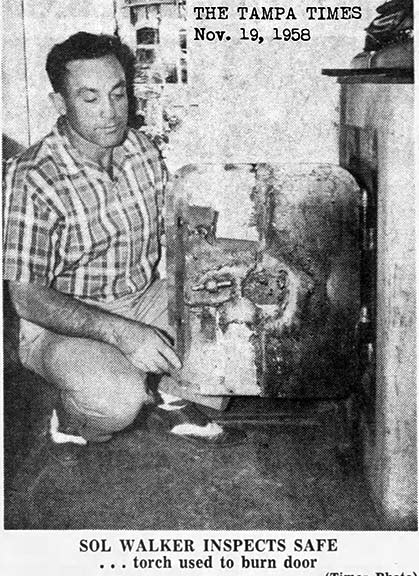
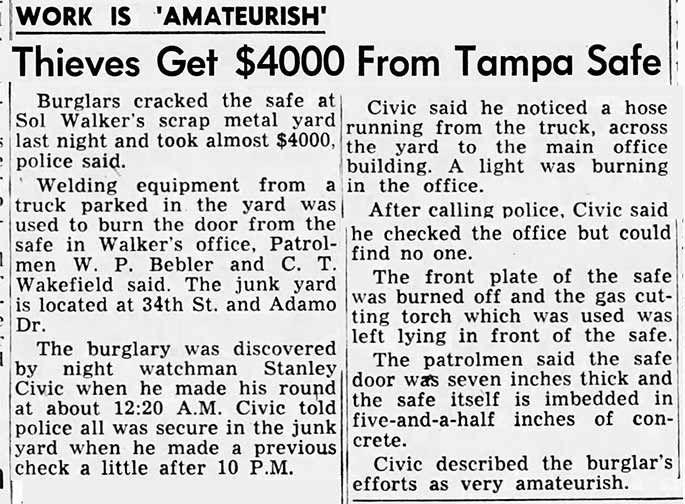
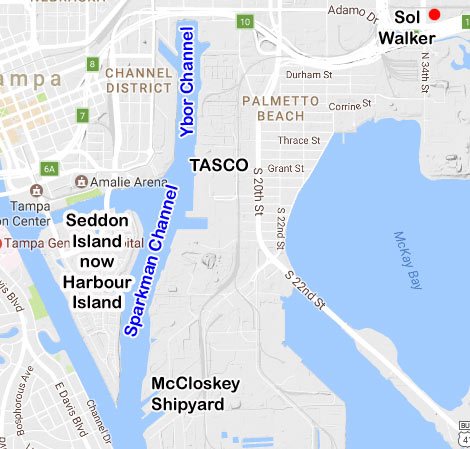
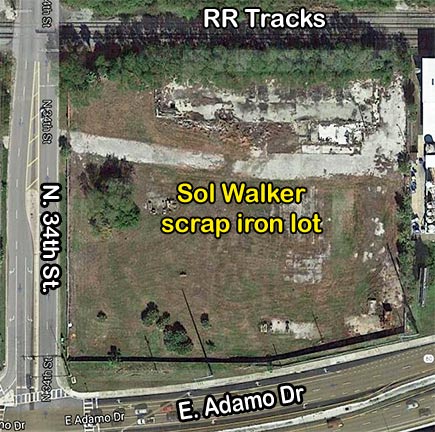
















 It was decided
that for $1,000, they would have the engine moved from Lowry
Park to Sol
Walker scrap metal company, then when the museum in Parrish,
Fla. was finished, they would spend another $1,000 to move it
to the museum from Walker. So "The Little Engine That Could" was
back with Sol Walker, but this time on his salvage lot on
Adamo Dr.
It was decided
that for $1,000, they would have the engine moved from Lowry
Park to Sol
Walker scrap metal company, then when the museum in Parrish,
Fla. was finished, they would spend another $1,000 to move it
to the museum from Walker. So "The Little Engine That Could" was
back with Sol Walker, but this time on his salvage lot on
Adamo Dr.
